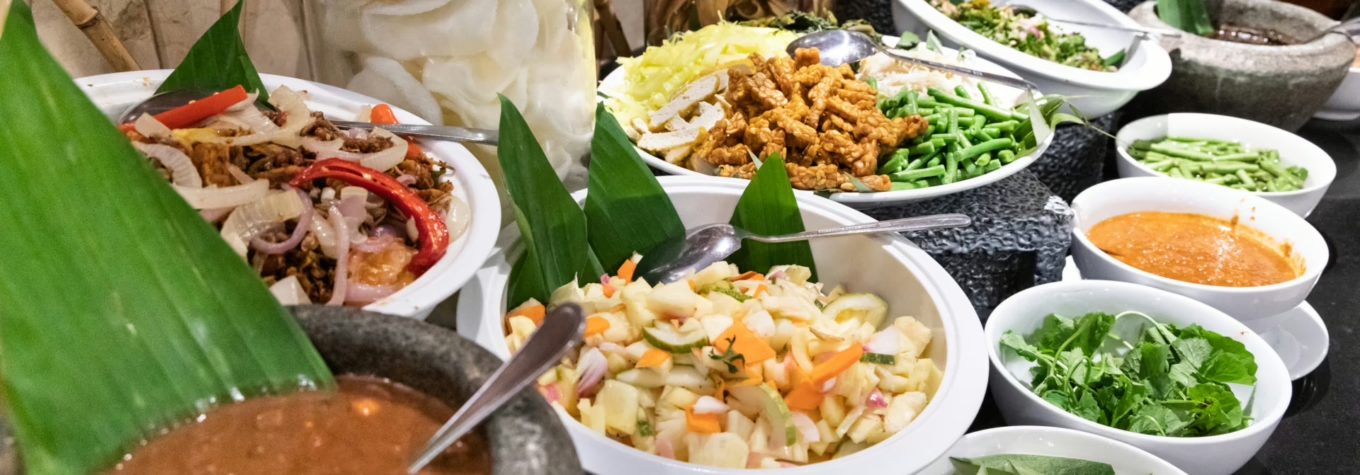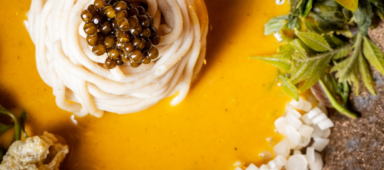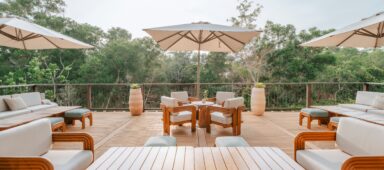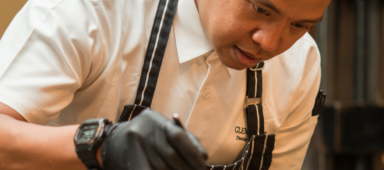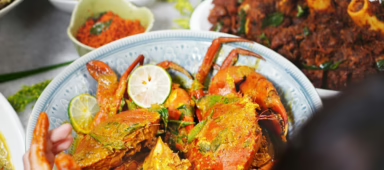Will the traditional salad foraged from the wild finally get the attention it deserves?
Will the traditional salad foraged from the wild finally get the attention it deserves?

It smelled heavenly, like a mix of lemon and citronella, as delicate as fine essential oils. The scent came from a pale green leaf of the lemon basil, crushed to release its aroma into the dank market air. Malaysia’s ulam, or foraged wild greens, are as delectable a treat to the nose as to the palate.
Mandy Leong was deftly picking out a dozen varieties of these zesty greens at the market stall for her signature rainbow nasi ulam (ulam rainbow rice). “It always feels like an aromatherapy session when I’m preparing the dish,” said Leong, a home chef who teaches classes in making nasi ulam and other healthy food.
Though sometimes called a Malaysian salad, it’s hard to slap a label on ulam. It is the collective name for the indigenous wild leaves, herbs, shoots, nuts and flowers that are eaten raw or lightly blanched. Most have strong flavours, with a fresh and tangy scent, and are said to have health properties.
There are dozens of varieties, among them the popular ulam raja (cosmos caudatus), petai (parkia speciosa) and pegaga (centella asiatica). They are said to have antioxidant, antimicrobial and antiaging effects.
The best way to get to know ulam is to taste it. Traditional Malay restaurants serve them in raw bunches with a range of dipping sauces. That’s the classic way to eat ulam. But these days, they get blended into drinks or made into contemporary dishes as well.
Though sometimes called a Malaysian salad, it’s hard to slap a label on ulam. It is the collective name for the indigenous wild leaves, herbs, shoots, nuts and flowers that are eaten raw or lightly blanched.
Dr. Eric Olmedo, a research fellow with the Institute of Ethnic Studies in Universiti Kebangsaan Malaysia, is exploring further the contemporary use of ulam, including in fine dining. He is currently heading a two-year research project that will culminate in an Ulam School.

Olmedo, a Frenchman married to a Malaysian, is an ulam fan. He had his first taste of these aromatic herbs 15 years ago at a Sunday lunch at his Malaysian in-laws’ home in his introduction to classic Malaysian cuisine.
Though unfamiliar to his taste buds, it was love at first bite. He loved the strong peppery flavours. “I felt refreshed immediately,” he said.
With a grant from the Toyota Foundation last year, Olmedo set up research teams in Malaysia, Vietnam and Cambodia to study the native edible wild greens and herbs in each country, their nutritional properties and their use, to create a database.
Vietnam, Cambodia and several other Southeast Asian nations also have a tradition of eating these nutritional wild plants. About one-third of their plants are familiar to Malaysians, but the rest are unique to their location.
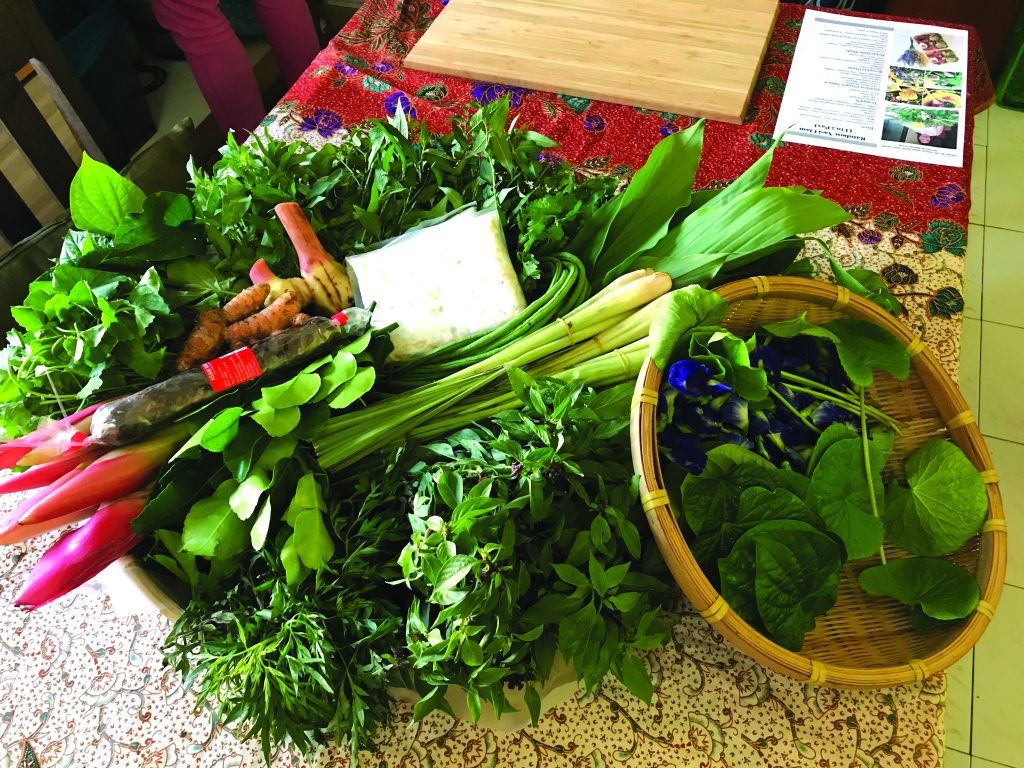
The Ulam School will be an online school as well as a physical school at the university’s research centre on Langkawi island, targeted at locals and tourists. The online school will offer courses on ulam, their properties and recipes, while the Langkawi school aims to provide short classes on ulam and cooking.
Olmedo feels that a return to ulam can give a healthy boost to the Malaysian diet at a low cost. While it is still widely eaten in Malaysia, ulam is not often the go-to choice of city people and rarely appears on the menus of upscale restaurants.
“Nutrition advice in Malaysia often emphasises Western-influenced diets but imported food can be expensive. Ulam makes more sense,” he said.
His research team includes chefs to develop recipes for the modern palate and is also working with fine-dining restaurants for ideas on the contemporary use of ulam. Of course, nutrition is the top priority, and thus, there won’t be any deep-fried ulam even if it’s tasty!
For Olmedo, there’s nothing better than a simple meal of brown rice, grilled fish and ulam, which should include his favourite daun gajus, or cashew leaf. “I feel instantly energised!” he added.
Health and nutrition were also at the top of Leong’s mind when she came up with the colourful rainbow ulam rice a few years ago to heal her spirit after her husband passed away. She found its invigorating flavours and colours to be a balm for her body and soul.
With delicate colours entirely from plants and flowers, as well as the aroma of finely sliced ulam, the rainbow nasi ulam is a delightful party dish.
It has also turned out to be one of her most popular classes with students coming from as far as Singapore. Most of them want to eat healthier. Some are vegetarians or vegans wanting to add variety to their meals.

Leong has crafted a vegan and vegetarian version where salted eggs are omitted and spicy shrimp paste is replaced with a tangy pineapple sauce. She has also experimented with Western ingredients such as nuts for different palates.
Her creation is a cross between the classic ulam dishes of the Malay and Nyonya cuisines, which share similarities but use different herbs. Leong’s dish is based on her mother’s recipe, which was learned from a Nyonya neighbour. “My mum, Lana Lee, would make this dish once or twice a year,” said Leong. “But as I was young, I was often chased out of the kitchen and told to go study instead!”
It was only much later that she learned to make it. Her first attempt took her almost eight hours as she got carried away and used too many herbs, which had to be sliced finely. Along the way, Leong learned how to choose the right herbs for the occasion, how many to use, and how to efficiently slice the greens and store them.
Her dish has also evolved with new ideas and is likely to change again, but the must-haves remain kaffir lime leaves, lemongrass and mint, all of which are healthy and tangy. Ulam rice is still one of Leong’s go-to dishes for a soul-lifting meal.
